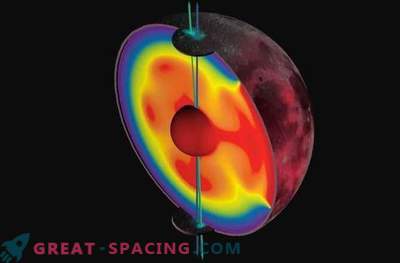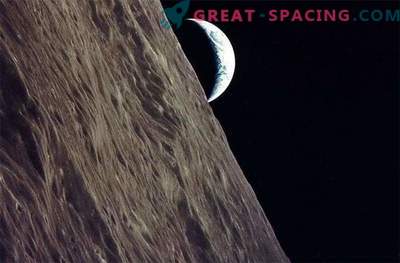
Information from ancient volcanic deposits hints that a significant amount of water was present in the lunar magma
A new study suggests that volcanic deposits on the surface of the satellite contain a huge amount of water compared with the surrounding landscapes. The deposits are believed to have fixed in the form of glass beads created by explosive magma eruption.
For many years, researchers believed that the interior of the satellite does not have water and other volatile compounds. But their opinion began to change since 2008, when traces of water were discovered in the volcanic glass beads, delivered by the 15th and 17th Apollo missions. An analysis of 2011 showed that the beads contain almost the same amount of water as some terrestrial basalts. That is, in the mantle part of the satellite there is as much water as in the earth one.
The main snag is whether this data represents something exceptional and rare or is it standard for the whole Moon. Orbital observation allows you to look at areas to which the earth apparatus never reached. Surprisingly, almost all of them have water signatures, so Apollo samples are no longer perceived as anomalous. Orbital spectrometers are used for the search, which determine the amount of light that bounces off the surface. By analyzing which waves are absorbed and which ones are reflected, you can calculate the material.
The only problem is that during the daytime the lunar surface heats up, which means the sensor also captures the heat.

New research shows water marks in ancient volcanic deposits. Colored areas - high water content. Yellow and red - the largest water areas
To solve the problem, scientists studied in detail the samples obtained by Apollo. Virtually all pyroclastic deposits showed the presence of water. If the interior of the satellite is rich in water, then many questions arise regarding the formation of the object.
Researchers believe that the satellite appeared after a body the size of Mars crashed into Earth, sending many fragments into orbit. The presence of internal water suggests that it somehow was able to survive after the impact or arrived in asteroids and comets before the moon became completely solid.
Volcanic beads hold about 0.05% of water in bulk. But precipitation is large, so the potential is large. Observations also mark water ice in areas located in the shade.











































